

Essay analyzes two recent disputes over academic freedom @insidehighered. During December, the two most-viewed stories carried by Inside Higher Ed concerned academic freedom.
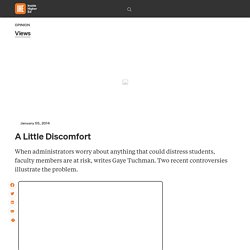
The first reported on Shannon Gibney, a professor of English at Minneapolis Community and Technical College. The second was about Patricia Adler, a professor of sociology of the University of Colorado at Boulder and the recipient of awards for both her teaching and her research. As I think about these two women with very different careers at very different institutions, I hear Big Bird singing a new refrain: “Two of these things are so like the other; two of these things seem so the same.” Academic freedom is an old issue. Schrecker, like others, also reminds that academic freedom has had a checkered history in the United States. What’s new is the nature of these instructors’ alleged academic malfeasance. In that first version, the university claimed that more than one student in the room felt ill at ease -- sexually harassed, they claimed. To Strengthen Teaching:An Evaluation of Teachers Institute Experiences - Yale National Initiative.
This report is divided into six sections.
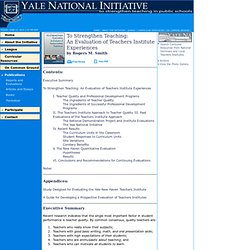
Section I summarizes the conclusions of recent research on the ingredients of teacher quality and effective professional development programs. Section II describes the Teachers Institute approach to improving teacher quality. Section III reviews past evaluations of the Teachers Institute model. Section IV reports the results of recent research relying on teacher surveys. Section V describes a quantitative study of the impact of participating in Institute seminars on New Haven teachers and students from the 2000-2001 through the 2004-2005 academic years. Summary of Teaching Responsibilities - UCAT. Explanation · Writing Tips · Sample Teaching Descriptions · Other Items to Include When you are putting together a teaching portfolio, the description of your teaching responsibilities is a relatively simple document to start writing first.
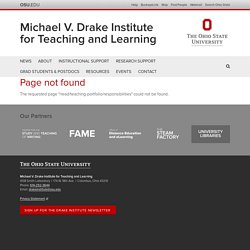
This document should be an expansion of the teaching duties that you list on your curriculum vitae. It will provide your audience with the context for the rest of the items in your portfolio. If you are writing this narrative for a formative portfolio, it can include as much information as you want to reflect on. If you are writing this narrative for a summative portfolio, keep in mind that you are describing your experience for others who are deciding whether they should hire or promote you. Writing Tips To begin, think about what your actual responsibilities have been and describe each one with a sentence or two. To help you get started, answer the following questions for each class you have taught. Peter Hotez, M.D, Ph.D.: Where Are the Scientist-Advocates and Civic-Scientists?
The flattening in support for biomedical research as well as other research fields in the United States over the last decade is having serious consequences for American science and scientists.
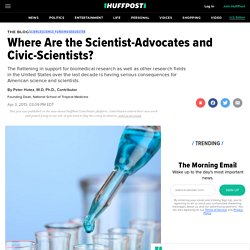
Ultimately, we need a new generation of scientist-advocates and policy experts if we expect to reverse this trend. The losses are real. The most recent news is that through sequestration there is a looming $1.6 billion cut to the budget of the National Institutes of Health (NIH), by far the largest public funder of biomedical research. Since 2003, the NIH budget has risen only 15 percent to just over $30 billion. Even before sequestration (taking inflation into account) the NIH provides 20 percent less in support for biomedical research annually than it used to 10 years ago. Nolan Bushnell: Education Meets Chuck E Cheese.
Nolan Bushnell likes to play.
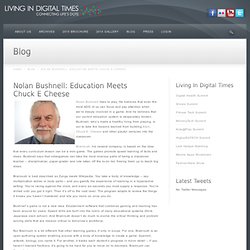
He believes that even the most ADD of us can focus and pay attention when we’re deeply involved in a game. And he believes that our current education system is desperately broken. Bushnell, who’s made a healthy living from playing, is out to take the lessons learned from building Atari, Chuck E. Cheese and other playful ventures into the classroom. Brainrush, his newest company, is based on the idea that every curriculum lesson can be a mini-game. Brainrush is best described as Zynga meets Wikipedia. Bushnell’s game is not a new idea. But Brainrush is a bit different that other learning games, if only in scope. Finally, according to Bushnell’s research, Brainrush elicits thalamic engagement.
InstructorRole.pdf. Mark Edmundson's new book calls for renewed emphasis on teaching. It’s a question many professors may be asking themselves this month, as they prepare for another academic year: “Why teach?”

Mark Edmundson, professor of English at the University of Virginia, answers the question in a new book, Why Teach? In Defense of a Real Education, out Tuesday from Bloomsbury. But what is a real education – and why does it need defending? “It's an education in which the student follows the Platonic injunction: Know Thyself,” Edmundson said in an e-mail interview from Nova Scotia, where he recently vacationed. “And also seeks to know the world. All too frequently, however, Edmundson argues, that kind of education is upended by the goals of the “corporate university” and the broader consumer culture, in which iPads and television largely have supplanted literature and philosophy.
“As a college professor, I get asked the where-to-go question frequently, and I know that all of us teaching in colleges and universities do too,” Edmundson says in Why Teach?